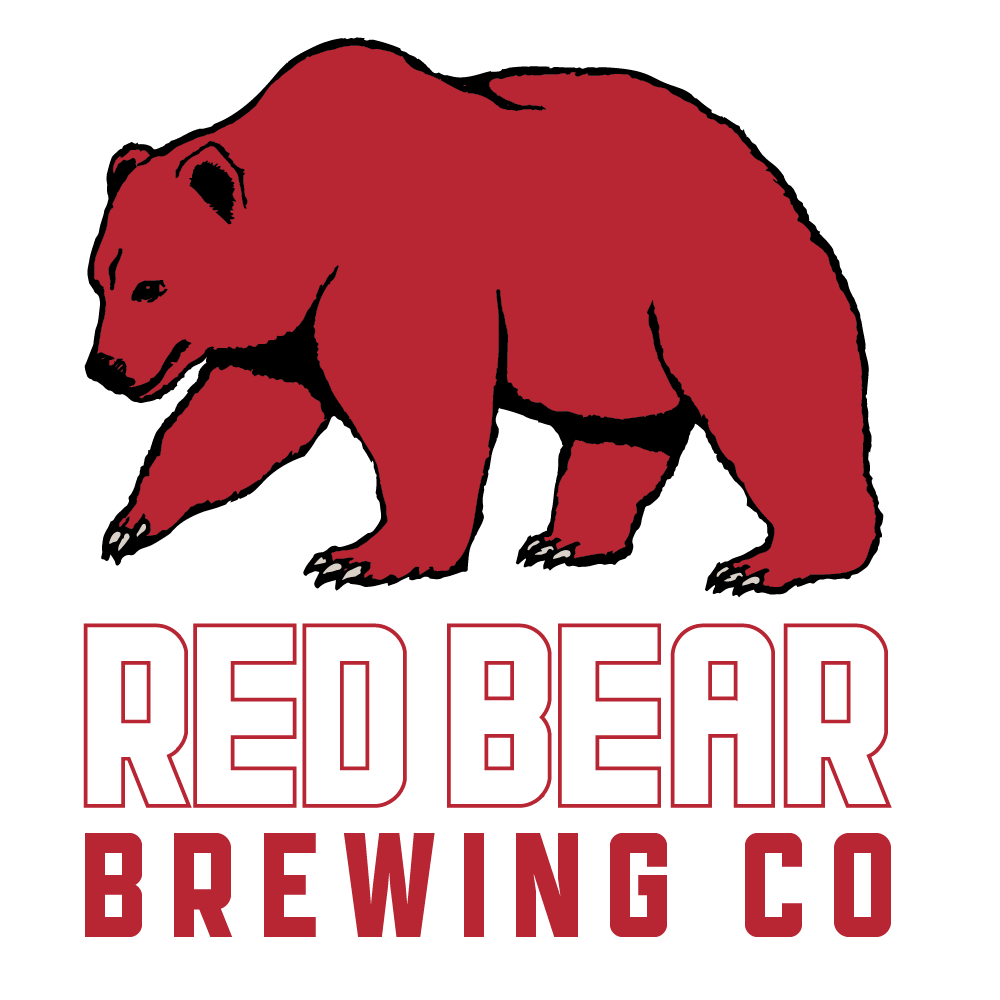Ever wonder how beer goes from grain to glass?
Creativity meets science in each batch of beer brewed at Red Bear Brewing Co. We follow these methods below to control each variable as closely as we can through each step of the process. We also perform sensory tests to ensure the beer is up to snuff. As in we taste the beer. For quality. A lot.
1) milling and mash in
Grain is crushed in our mill and fed into and auger that carries it up to the mash-tun where it is mixed with precisely temperature controlled filtered water. Usually malted barley is used for craft beer, but sometimes wheat, oats, rye and other grains are added. Crushing the grain exposes it's endosperm which contains the starches that make up the body of the beer!
2) Mashing
The crushed grain is mixed with water that is heated to a precise temperature. This activates enzymes that exist in the grain that break down the endosperm from starch to simpler sugars that yeast can easily consume. Once the enzymes are done, the liquid, now known as wort, is recirculated through the grain bed acting like a filter to remove as many particles of grain as possible.
3) Boiling
Once the sugars and other flavor compounds are broken down the wort is transferred to the boil kettle. It is then boiled; this accomplishes a few things. Some undesirable compounds are boiled off. The wort is sterilized from the heat and concentrated to the specifications of the beer recipe. Hops are added for bitterness and flavor. Sometimes other simple sources of sugar and flavoring ingredients are also added.
4) Grain out
While the rest of the brewing process continues, the now-spent grain is removed from the mash tun and picked up by local farmers to be used for animal feed or composting. It’s the circle of liiiife!
5) Chilling
The wort is almost ready to be turned into beer! It passes through a heat exchanger to be cooled to a temperature that is safe for yeast to survive in on its way to a fermentation vessel. The water used to cool the wort is also filtered so it can be recycled back into the hot liquor tank. This saves both energy and water!
6) Fermentation
The now cooled wort is transferred into a fermentation vessel. Yeast is added which will consume the sugars in the wort to produce ethanol (alcohol) and Co2. During this process, depending on the strain of yeast and temperature it ferments at, the yeast can create a wide array of flavor and aroma compounds.
7) Conditioning
The newly created beer is transferred to a brite tank where it is further matured and carbonated. Once the beer is ready, it is kegged out to be served in our taproom or distributed to be poured elsewhere.
And that’s how your delicious Red Bear beer is made! Hopefully you’ve had one open while reading, but feel free to go get one now!
Head Brewer,
Simon Bee





